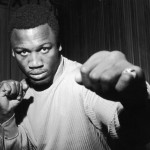Big Business Occupies Childhood
Tuesday, November 15th, 2011 By Jeffrey Page
By Jeffrey Page
We’ve got an economy in the pits. We’ve got people who would put our drinking water at risk to frack for natural gas. We’ve got several pretty weird people wishing to make the race against President Obama next year. We’ve got a changing climate. We’ve got war.
So on the surface, I concede, my connection of a catalog from L.L. Bean with my still unanswered question about whatever happened to childhood may not be sound like a barn burning issue.
But wait a second. I’m talking about children, which automatically makes it important.
Next time you wonder whatever happened to childhood, remember one of the primary activities of winter when we were kids. In a snowball fight we’d scoop up some snow – the wetter the better – pack it into the shape of a ball and heave it.
We would team up with a friend on one side of, say, a driveway and two of our friends would be on the other side. The four of us would make snowballs as fast as possible, and toss them across the divide. If our aim and timing were good, and if our arm was strong enough, we’d toss a snowball and nail one of the other kids with a snowball that pounded into an arm or a chest – or (best of all) in the face. Then we’d hide from counterattack in the ragged snow forts we had built.
In fact, one of the things that happened to childhood is that we allowed retailers and merchandisers to get their hands on it. Specifics? Here’s one.
Arriving in the mail this week was an L.L. Bean catalogue offering all manner of parkas, gloves, hats and socks to keep you warm and dry. So far, so good.
And there, at the bottom of Page 23, was one of the explanations of what has happened to childhood.
We used to make snow balls with out hands. But now, for $29.95, Bean will sell us a five-piece kit containing two pliers-like devices with attached cups. Fill the cups with snow, squeeze, and presto; you have what the catalogue writer describes as “perfect snowballs.”
Also in this set of “fun tools” are three plastic molds. Fill one with snow and you have a turret. A turret? The thing that goes on castles? What’s next? A moat? Fill the other two molds and you have shapes with which to make snow blocks – your snow fort’s walls.
“These fun tools let kids build their own snow forts and fill them with perfect snowballs,” Bean says.
The most important part of childhood is learning about the world and how it works. One of the things we learned was that scrunching snow in our hands rarely resulted in a “perfect snowball,” whatever that actually is. But we also learned that perfection wasn’t the point. The idea was to do our best and have fun.
jeffrey@zestoforange.com





